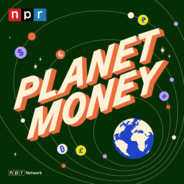In 2007, Uruguay had a massive problem with no obvious fix. The economy of this country of 3.5 million people was growing, but there wasn't enough energy to power all that growth.Ramón Méndez Galain was, at the time, a particle physicist, but he wanted to apply his scientific mind to this issue. He started researching different energy sources and eventually wrote up a plan for how Uruguay's power grid could transition to renewable energy. It would be better for the climate, and, he thought, in the long run it would be the most economical choice Uruguay could make.Méndez Galain shared his plan online and in a series of informal lectures. Then, one day he received a phone call from the office of the president of Uruguay, inviting him to put his plan into action.Countries all over the world have announced lofty goals to reduce the emissions that cause climate change. But Uruguay actually did it. In a typical year, 98% of Uruguay's grid is powered by green energy. How did it get there? It involved a scientist, an innovative approach to infrastructure funding, and a whole lot of wind.Today's show was hosted by Erika Beras and Amanda Aroncyzk. It was produced by Willa Rubin with help from Emma Peaslee. It was engineered by Maggie Luthar, fact-checked by Sierra Juarez and edited by Keith Romer. Alex Goldmark is our executive producer.Help support Planet Money and get bonus episodes by subscribing to Planet Money+ in Apple Podcasts or at plus.npr.org/planetmoney.Learn more about sponsor message choices: podcastchoices.com/adchoicesNPR Privacy Policy

Wirtschaft
Planet Money Folgen
Wanna see a trick? Give us any topic and we can tie it back to the economy. At Planet Money, we explore the forces that shape our lives and bring you along for the ride. Don't just understand the economy – understand the world.Wanna go deeper? Subscribe to Planet Money+ and get sponsor-free episodes of Planet Money, The Indicator, and Planet Money Summer School. Plus access to bonus content. It's a new way to support the show you love. Learn more at plus.npr.org/planetmoney
Folgen von Planet Money
355 Folgen
-
Folge vom 06.10.2023A man, a plan, wind power, Uruguay
-
Folge vom 04.10.2023The flight attendants of CHAOSWhen contract negotiations between Alaska Airlines and their flight attendants' union broke down in 1993, the union had a choice to make.The union — The Association of Flight Attendants-CWA — knew that if they chose to strike, Alaska Airlines could use a plan. While Alaska Airlines technically couldn't fire someone on strike, they could permanently replace the striking flight attendants with new workers. Essentially, if the union went on strike, they could risk thousands of people's jobs. The flight attendants knew they needed a counter-strategy.They went with a strategy they called CHAOS: "Create Havoc Around Our System."The strategy had two phases. Phase one: The union kept Alaska guessing about when, where, and how a strike might happen. They kept everyone, even their own members, in the dark. And in turn, Alaska Airlines had to be prepared for a strike at any place and any time. Phase two was to go on strike in a targeted and strategic way.The havoc that the flight attendants created set off a sort-of labor-dispute arms race and would go on to inspire strikes today. And, it showed how powerful it can be to introduce a little chaos into negotiations.Help support Planet Money and get bonus episodes by subscribing to Planet Money+ in Apple Podcasts or at plus.npr.org/planetmoney.Learn more about sponsor message choices: podcastchoices.com/adchoicesNPR Privacy Policy
-
Folge vom 29.09.2023A trucker hat mystery, the curse of September and other listener questionsBa-dee-yah! Say do you remember? Ba-dee-yah! Questions in September!That's right - it's time for Listener Questions!Every so often, we like to hear from listeners about what's on their minds, and we try to get to the bottom of their economic mysteries. On today's show, we have questions like:Why is September historically the worst month for the stock market?How did the Bass Pro Shops hat get so popular in Ecuador?Are casinos banks?What is the Federal Reserve's new plan to make bank transfers faster?Today's show was hosted by Sarah Gonzalez and produced by James Sneed. The audio engineer for this episode was Josephine Nyounai. It was fact checked by Sierra Juarez and edited by Dave Blanchard. Alex Goldmark is our executive producer.Help support Planet Money and get bonus episodes by subscribing to Planet Money+ in Apple Podcasts or at plus.npr.org/planetmoney.Learn more about sponsor message choices: podcastchoices.com/adchoicesNPR Privacy Policy
-
Folge vom 27.09.2023The natural disaster economistThere seems to be headlines about floods, wildfires, or hurricanes every week. Scientists say this might be the new normal — that climate change is making natural disasters more and more common.Tatyana Deryugina is a leading expert on the economics of natural disasters — how we respond to them, how they affect the economy, and how they change our lives. And back when Tatyana first started researching natural disasters she realized that there's a lot we don't know about their long-term economic consequences. Especially about how individuals and communities recover.Trying to understand those questions of how we respond to natural disasters is a big part of Tatyana's research. And her research has some surprising implications for how we should be responding to natural disasters.This episode was hosted and reported by Jeff Guo. It was produced by Emma Peaslee and edited by Jess Jiang. It was fact checked by Sierra Juarez and engineered by Josephine Nyounai. Alex Goldmark is our executive producer.Help support Planet Money and get bonus episodes by subscribing to Planet Money+ in Apple Podcasts or at plus.npr.org/planetmoney.Learn more about sponsor message choices: podcastchoices.com/adchoicesNPR Privacy Policy
